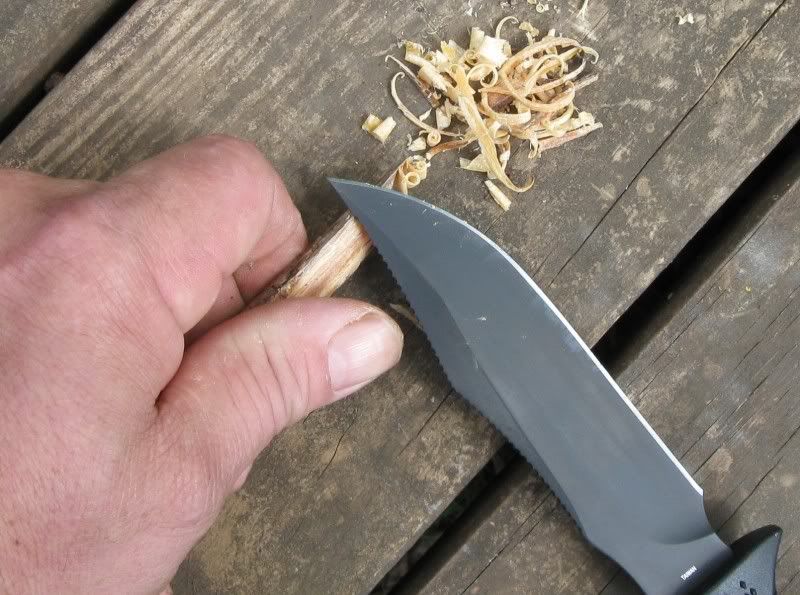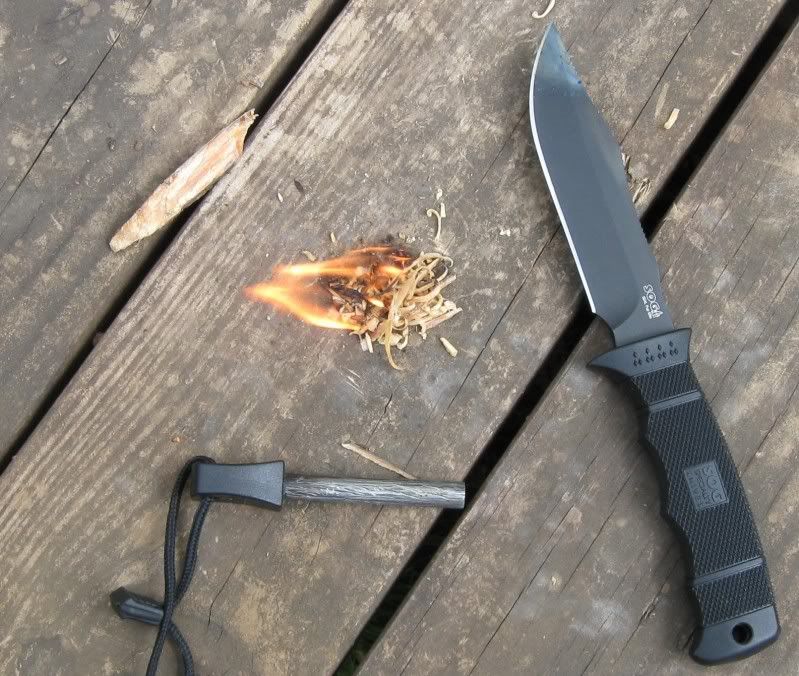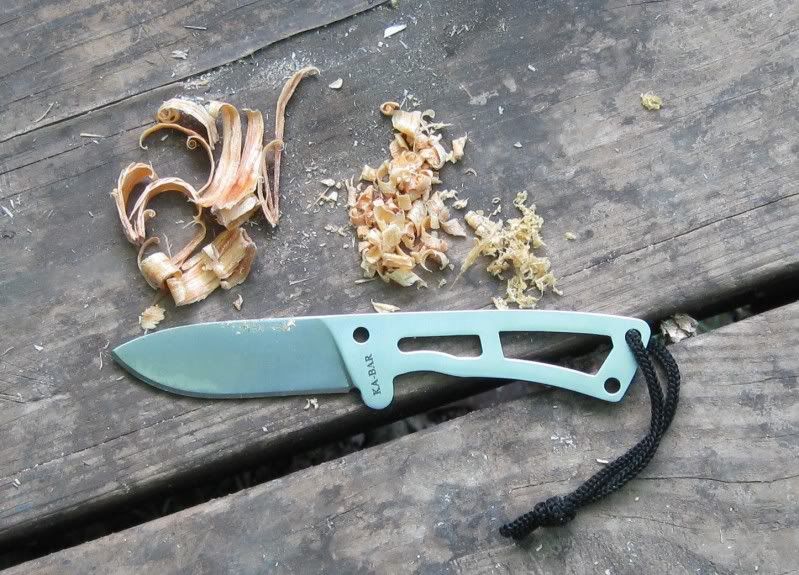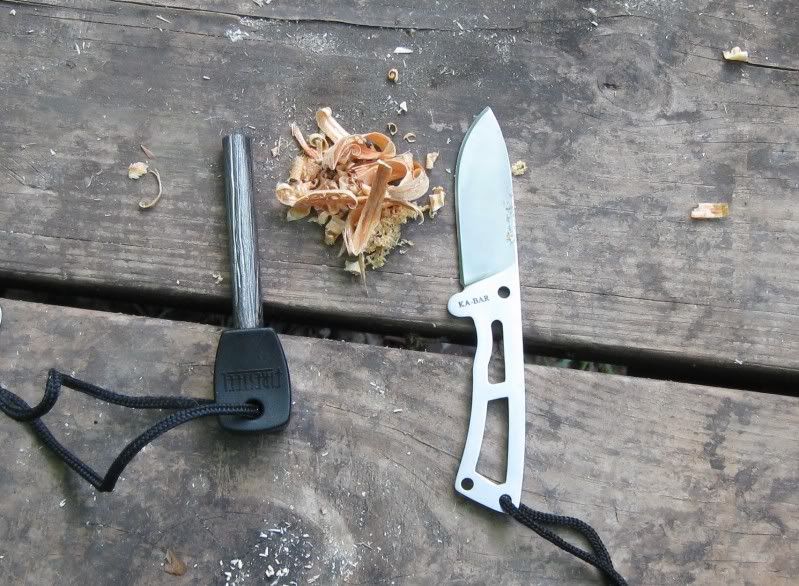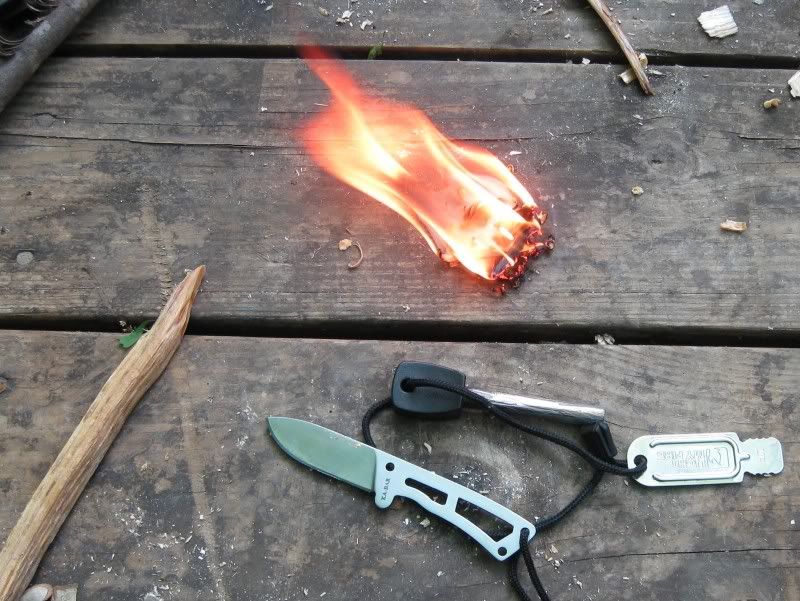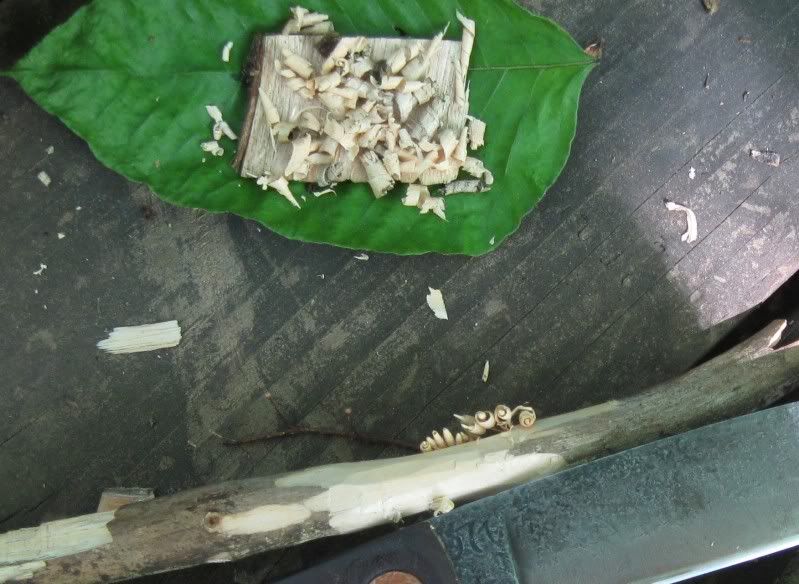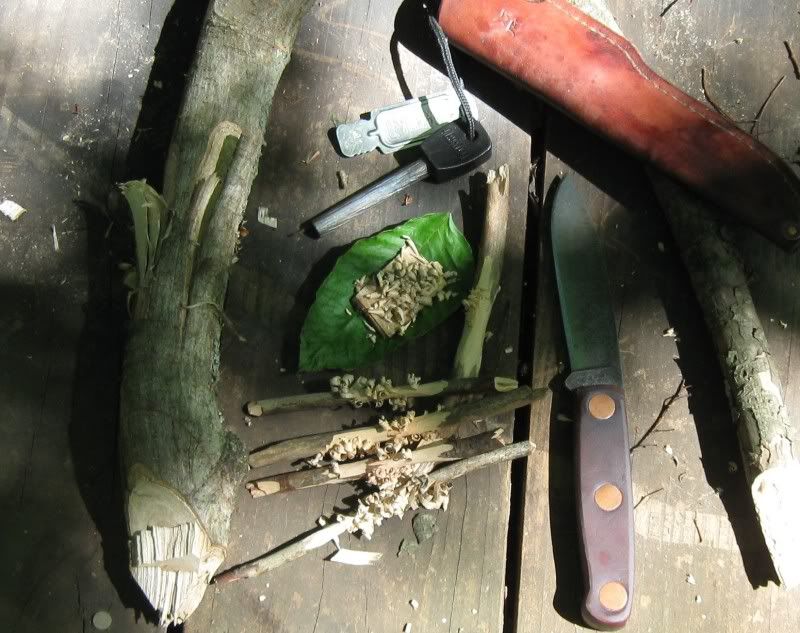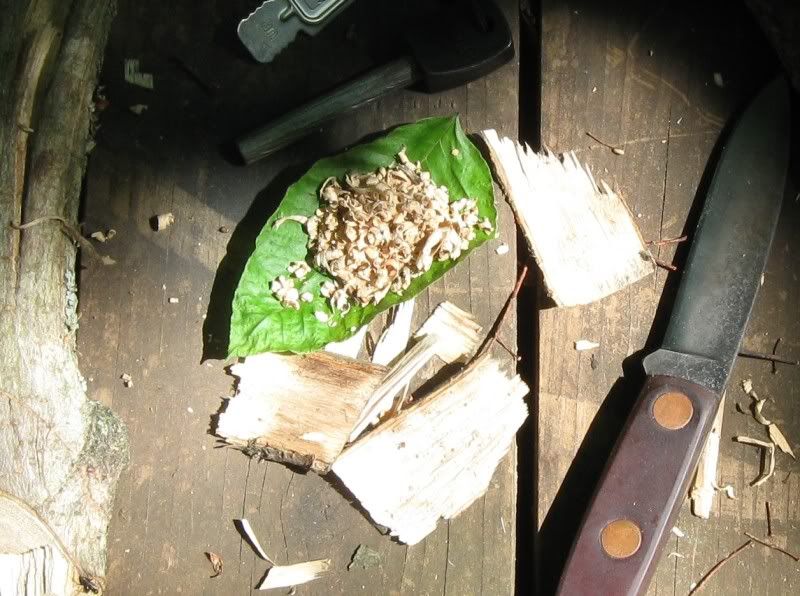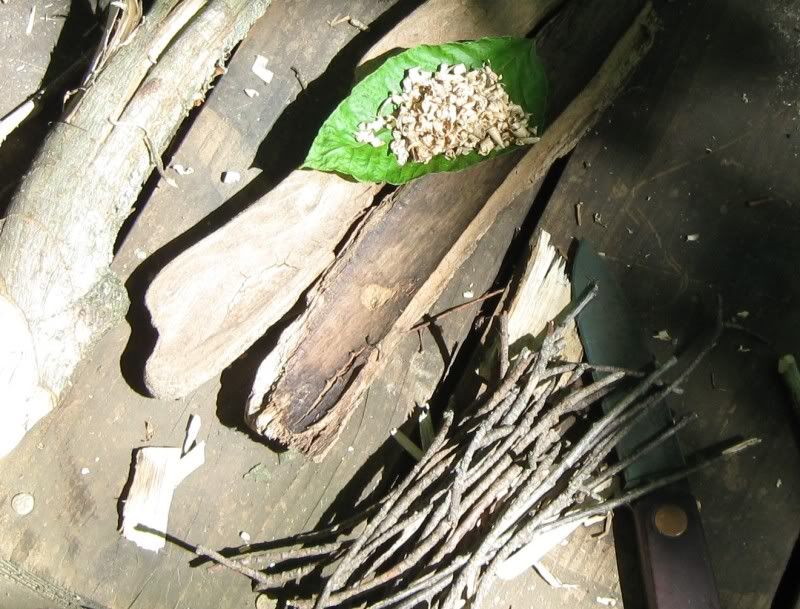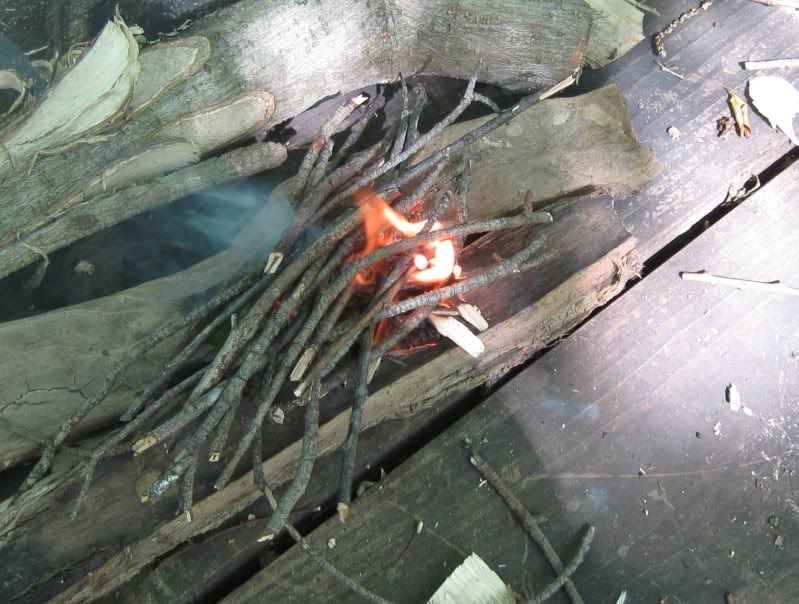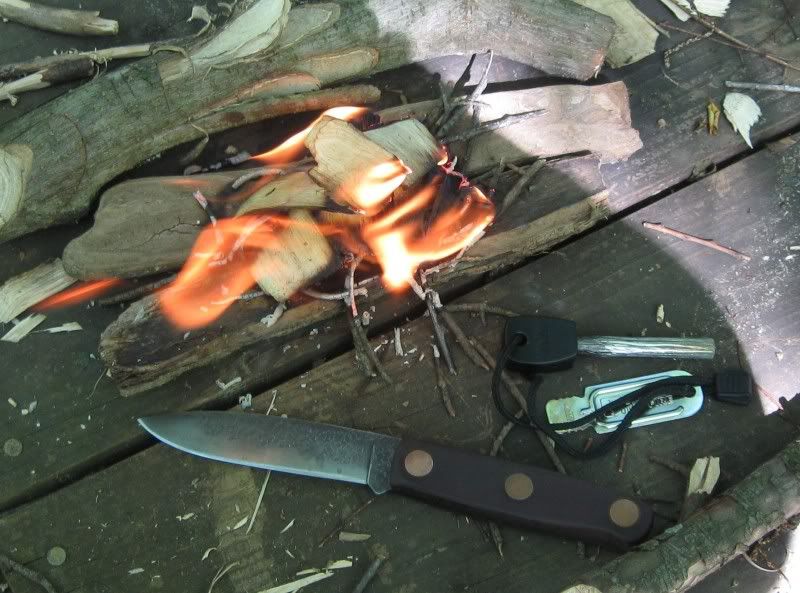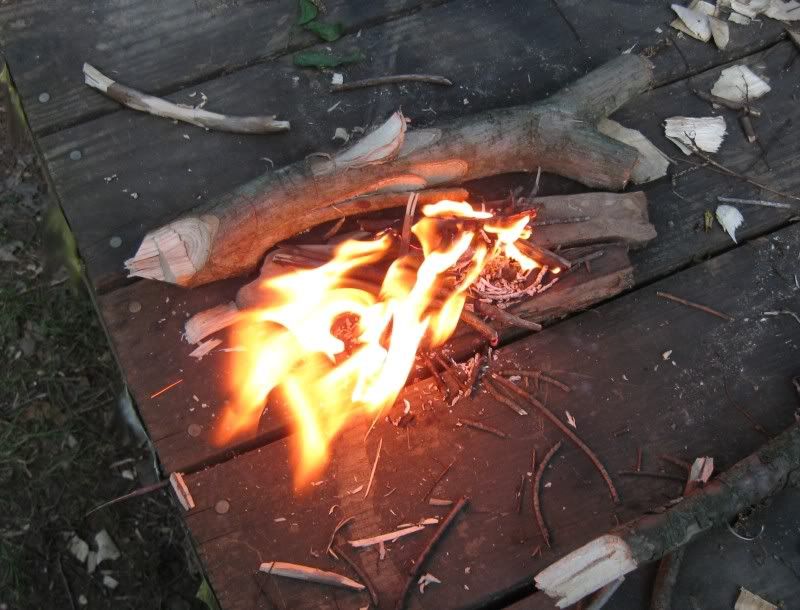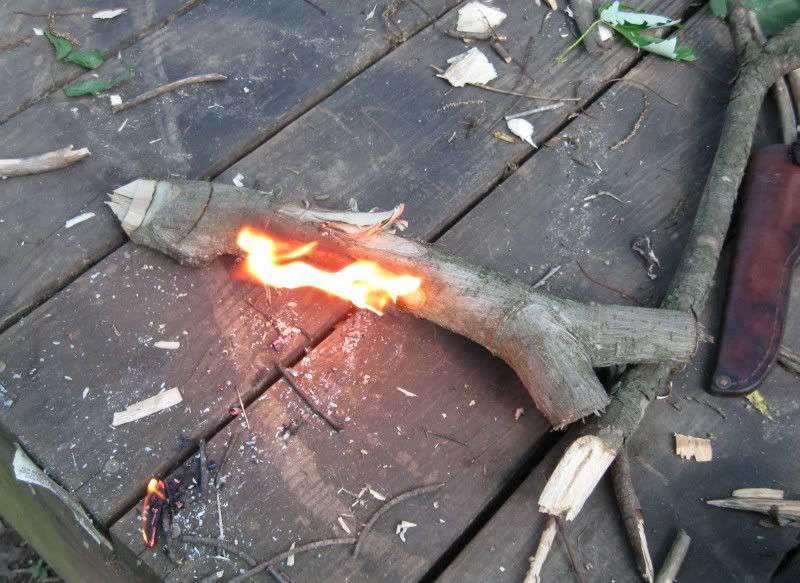Yesterday I did a little firecraft practice and demo with the firesteel. It had rained for three straight days
the fire pit
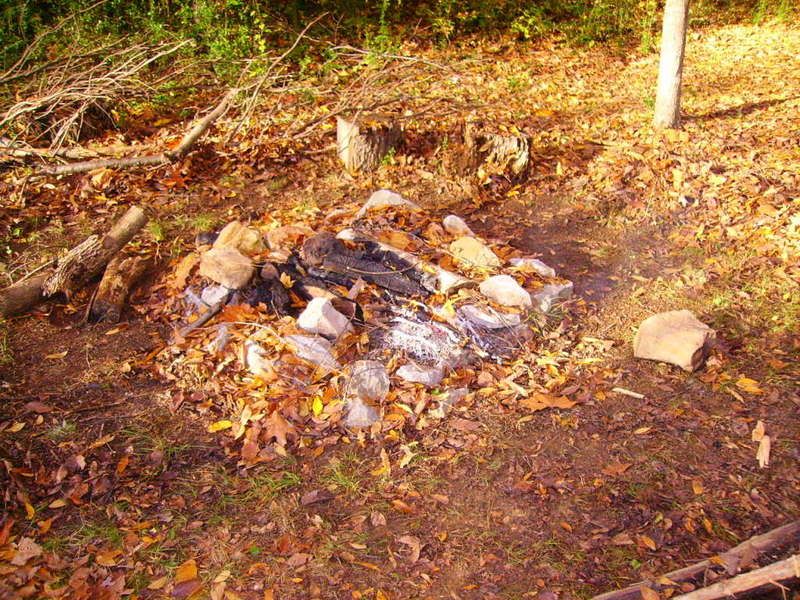

and some of the materials I am working with
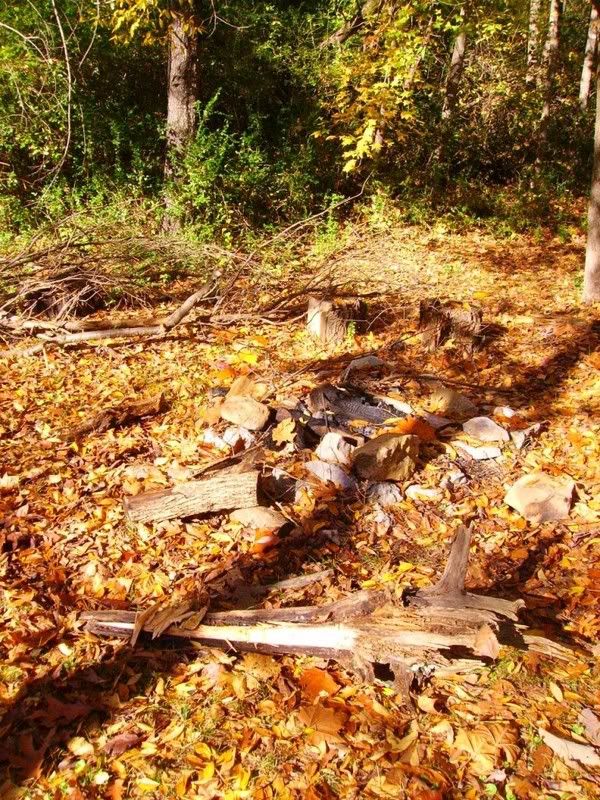
When starting a fire under wet conditions you want the driest materials you can find so gather things that are off the ground
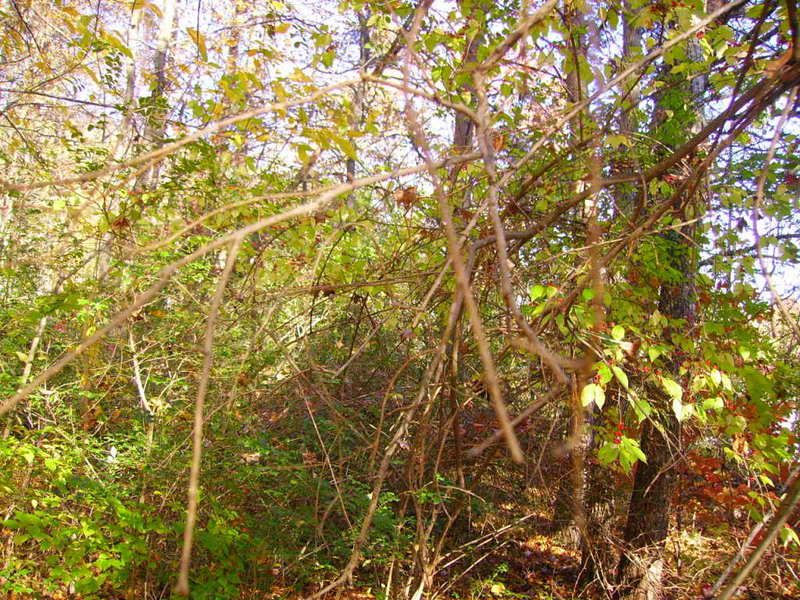
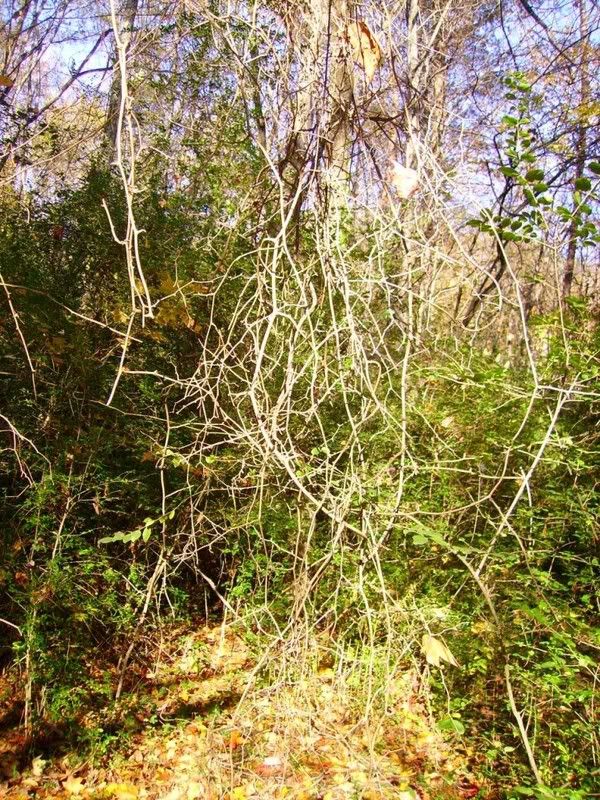

for this I used fatwood as tinder and kindling as all was so damp
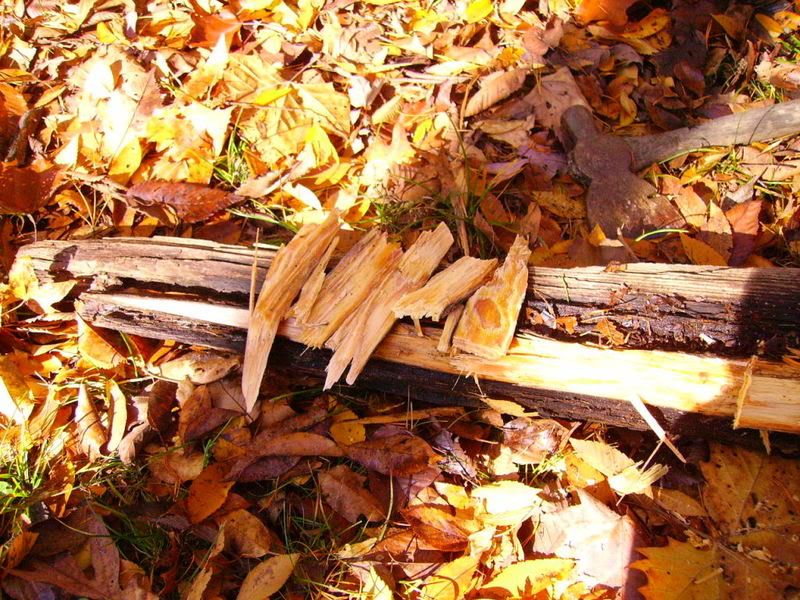
This is a sycamore leaf I used to catch the shavings and slivers on. I really love working with this little knife Rick made, it handles wonderfully and even after five or six fires started this way (among other things)...as hard as fatwood is this knife still shaves afterward.
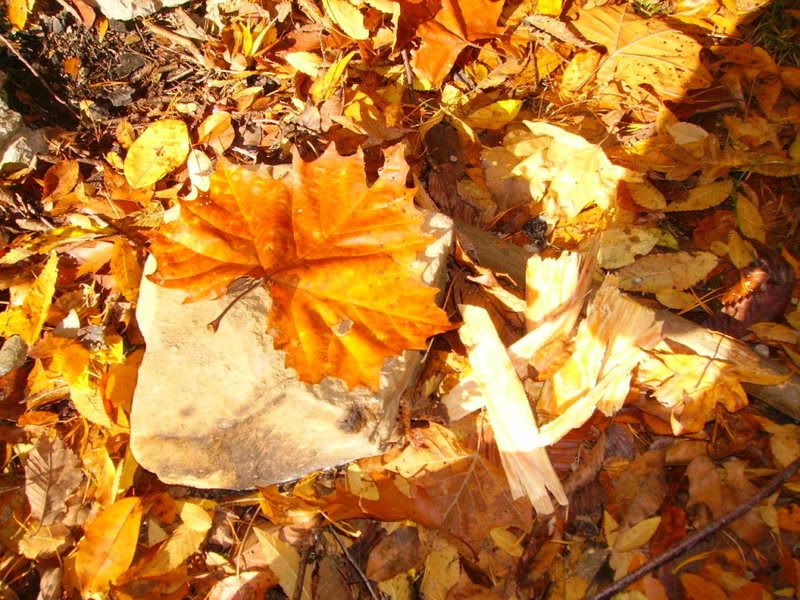
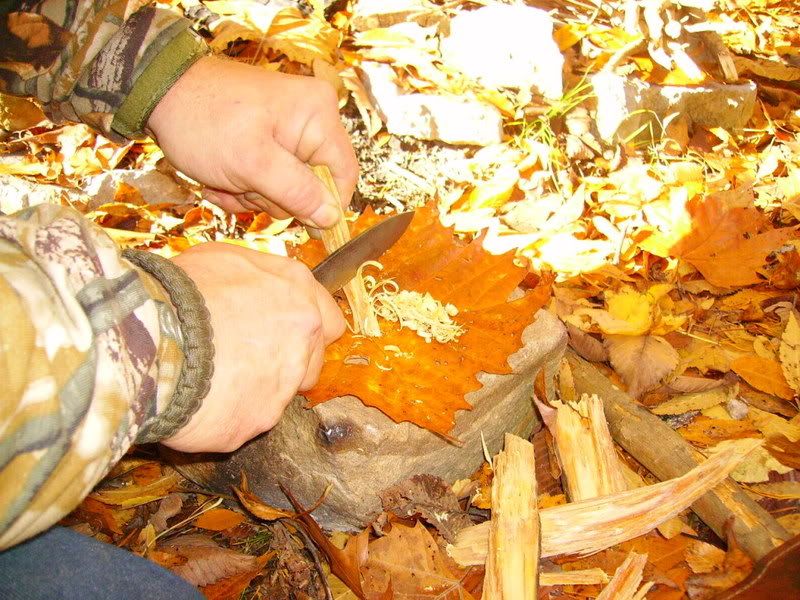
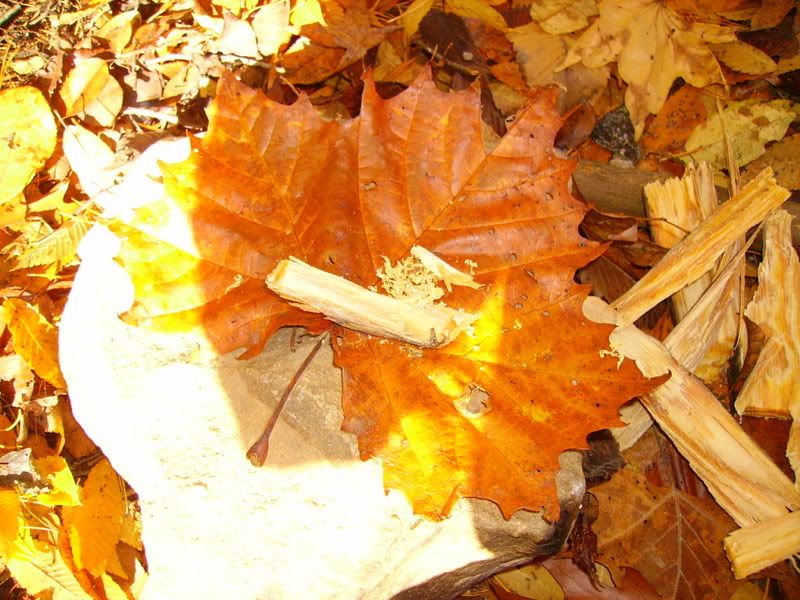

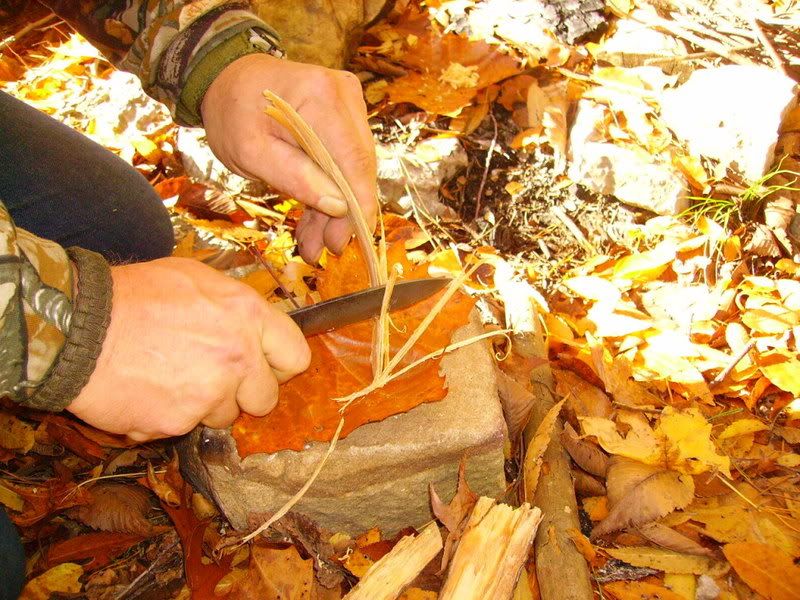
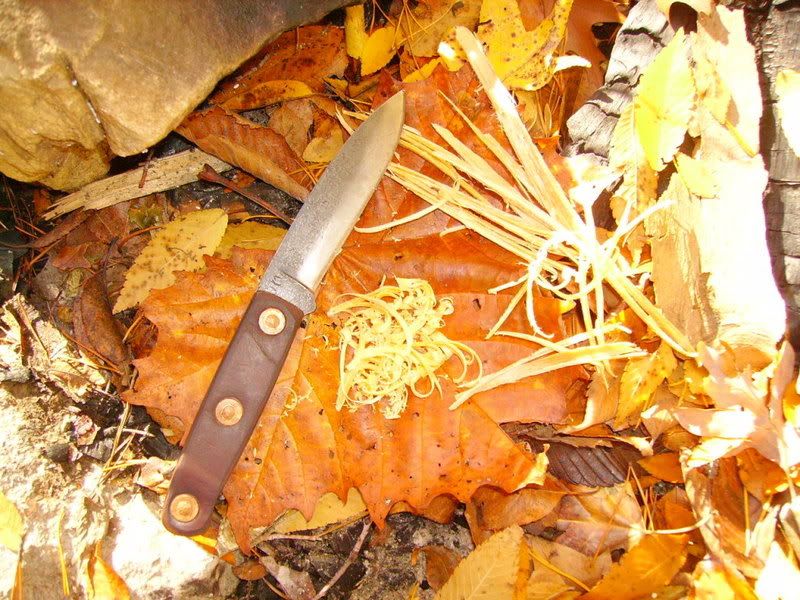
Then collecting my tinder I seperate it into piles and have it on hand ready to use
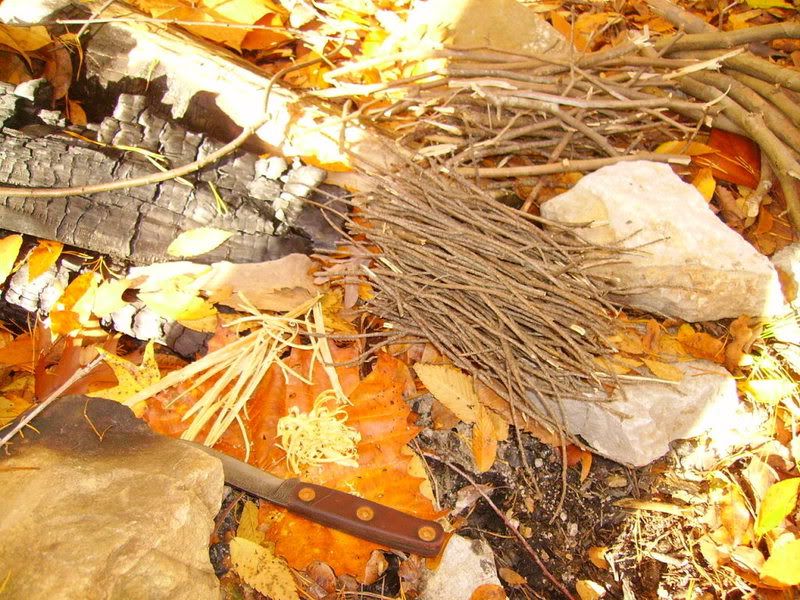
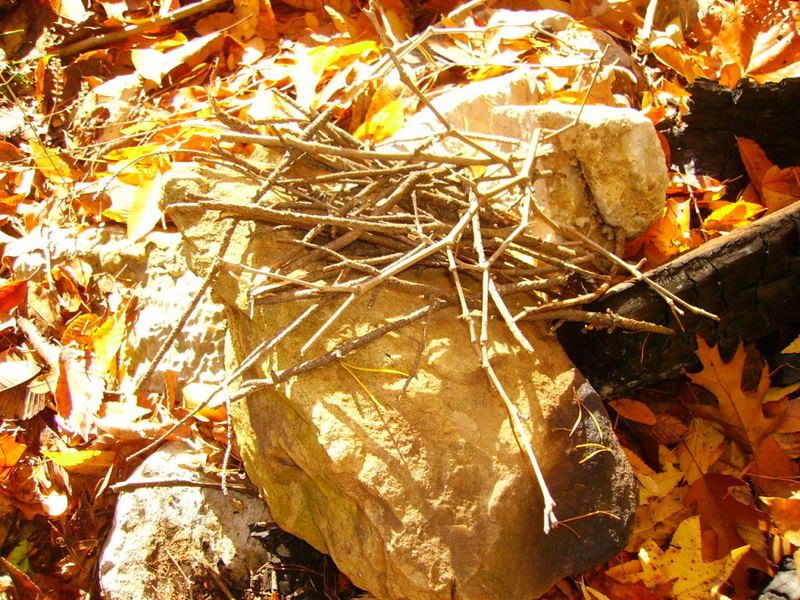
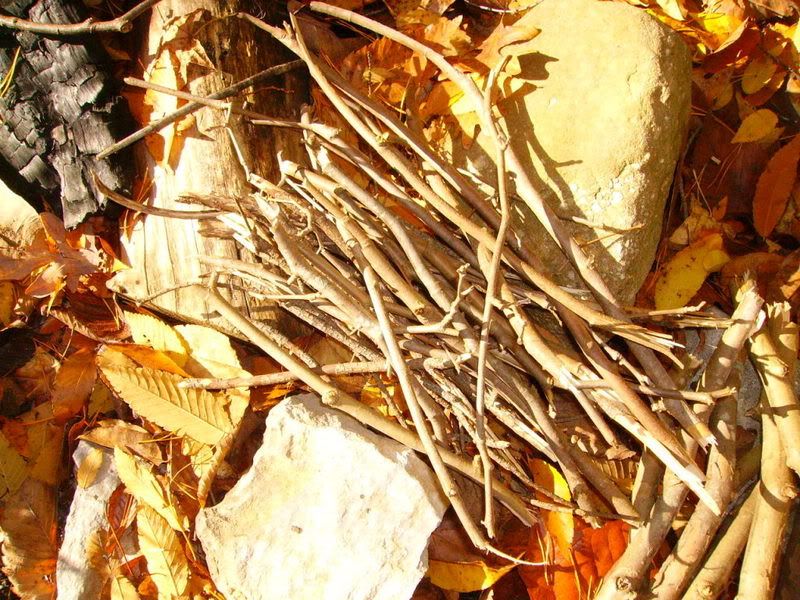
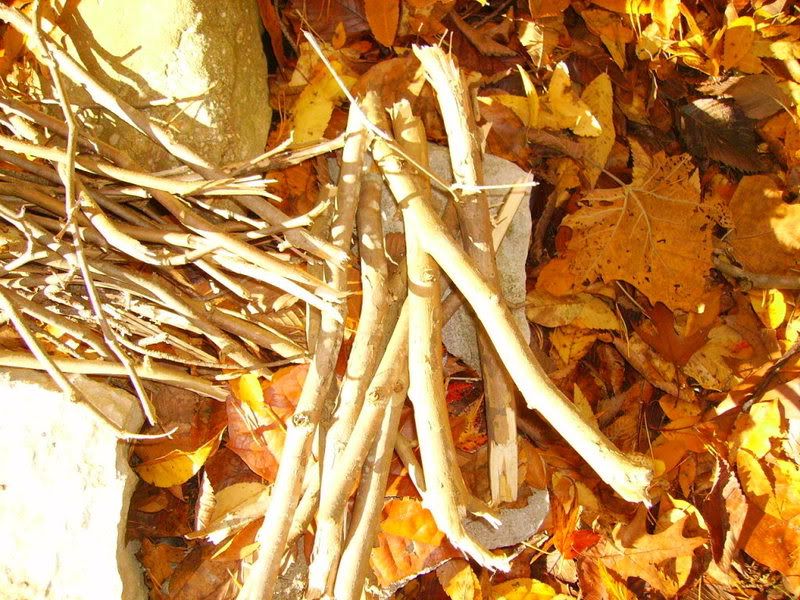
and with everything ready to go, I ignite the shavings
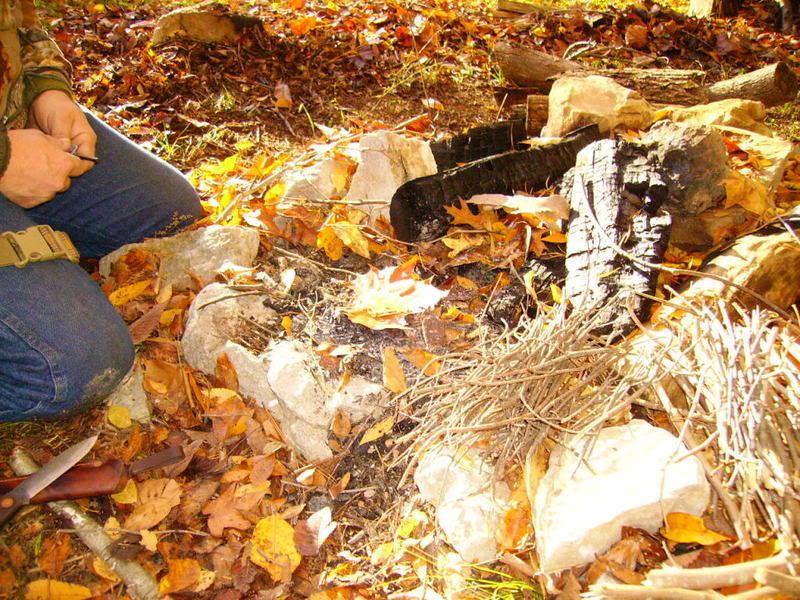
In the video you will see the steam from how wet everything is. Sorry for the quality but the sun was at just the right angle to cause havoc
http://uk.youtube.com/watch?v=oKnuLhgcYOc
the fire pit


and some of the materials I am working with

When starting a fire under wet conditions you want the driest materials you can find so gather things that are off the ground



for this I used fatwood as tinder and kindling as all was so damp

This is a sycamore leaf I used to catch the shavings and slivers on. I really love working with this little knife Rick made, it handles wonderfully and even after five or six fires started this way (among other things)...as hard as fatwood is this knife still shaves afterward.






Then collecting my tinder I seperate it into piles and have it on hand ready to use




and with everything ready to go, I ignite the shavings

In the video you will see the steam from how wet everything is. Sorry for the quality but the sun was at just the right angle to cause havoc
http://uk.youtube.com/watch?v=oKnuLhgcYOc


